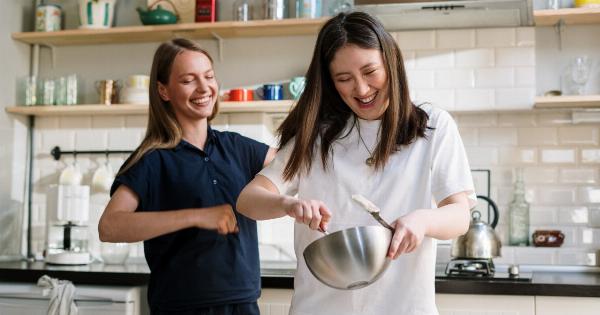Who can resist the allure of a delicate, pastel-colored dessert? Whether it’s a fluffy macaron, a creamy mille-feuille, or a mouthwatering strawberry tart, pastel delights not only satisfy your taste buds but also provide an aesthetic treat for your eyes. In this article, we will delve into the world of these delectable sweet treats, exploring their origin, popular variations, and the art of creating them. Get ready to indulge in a pastel paradise!.
The Origin of Pastel Desserts
Pastel desserts have a rich history that spans many countries and cultures. The word “pastel” itself originated from the Latin word “pasteles,” which referred to dough-like preparations.
It was in medieval Europe where pastries started to take on their pastel hues, thanks to the introduction of various natural food colorings such as plant extracts and crushed insects.
However, pastel-colored desserts truly gained popularity during the Renaissance period. The pastel shades were associated with femininity, elegance, and refinement, and they became a symbol of wealth and nobility.
The art of creating pastel desserts was reserved for skilled pastry chefs who would experiment with different flavors, colors, and fillings to create edible works of art.
Popular Variations of Pastel Desserts
When it comes to pastel desserts, the possibilities are endless. Here are some popular variations that will make your taste buds dance with joy:.
1. Macarons
Macarons are delicate, almond-based meringue cookies that come in a wide range of pastel colors. These petite treats have a slightly crispy outer shell and a soft, chewy interior.
Their flavor options are truly diverse, ranging from classic flavors like vanilla and chocolate to more adventurous ones like lavender and matcha.
2. Mille-feuille
Mille-feuille, or “a thousand layers” in French, is a classic French pastry that features layers of flaky puff pastry alternating with pastry cream.
Adorned with a pastel-colored glaze and powdered sugar, this dessert is not only visually stunning but also an explosion of flavors and textures.
3. Strawberry Tart
A buttery tart shell filled with luscious vanilla cream and topped with a medley of fresh, pastel-colored strawberries—this is a true delight for both the eyes and the taste buds.
The natural sweetness of the strawberries beautifully complements the creamy filling, creating a harmonious symphony of flavors.
4. Cotton Candy Ice Cream
Imagine indulging in a scoop of soft, velvety ice cream swirled with fluffy pastel strands of cotton candy. An instant mood lifter, cotton candy ice cream not only tastes heavenly but also adds a whimsical touch to any dessert spread.
It’s like a childhood dream transformed into reality!.
5. Pistachio Panna Cotta
Panna cotta, a silky Italian dessert, pairs perfectly with the delicate green shade of pistachios. This creamy delight is often garnished with crushed pistachios and a drizzle of honey, creating a visually captivating treat with a subtle nutty flavor.
6. Pastel Cake Pops
Cake pops on their own are already delightful, but give them a pastel makeover, and they become absolutely enchanting.
These bite-sized cake balls on a stick can be decorated with pastel-colored chocolates, sprinkles, and edible pearls, making them a charming addition to any dessert table.
The Art of Creating Pastel Desserts
Creating pastel desserts is not just about mixing a few drops of food coloring into the batter. It requires precision, patience, and creativity. Here are a few tips to help you master the art of creating pastel delights:.
1. Use Natural Food Colorings
While artificial food colorings are widely available, using natural food colorings can elevate your pastel desserts to the next level.
Beetroot powder, matcha powder, turmeric, and butterfly pea flower powder are just a few examples of natural colorings that can give your creations a delicate, pastel hue.
2. Gradually Add Color
When tinting your batters or frostings, it’s best to start with a small amount of color and gradually add more until you achieve the desired shade.
This way, you can control the intensity of the color and avoid ending up with an overly vibrant dessert.
3. Experiment with Flavors
Don’t be afraid to experiment with different flavors when creating pastel desserts. Consider incorporating floral essences like rosewater or lavender, citrus zests, or even unique spices to add depth and complexity to your creations.
4. Master the Decorations
The presentation of pastel desserts is just as important as their taste. Learn various piping techniques, edible painting, and garnishing methods to make your treats visually captivating.
Edible flowers, gold leaf, and pastel sprinkles are just a few elements that can be used to add a whimsical touch.
The Joy of Pastel Delights
Pastel desserts are not just a feast for the taste buds; they also bring joy to our senses. The soft hues and delicate designs evoke a sense of tranquility and elegance.
These delightful treats have the power to transport us into a whimsical world where indulgence meets art. So, go ahead, savor a macaron, dive into a slice of mille-feuille, and let the pastel delights ignite your imagination!.































